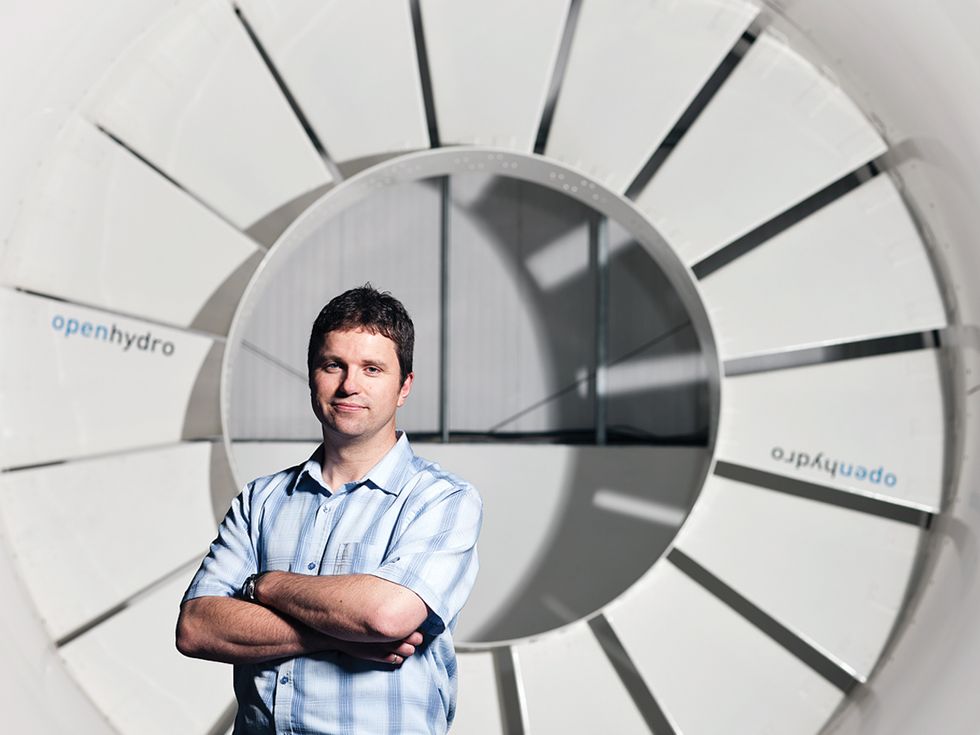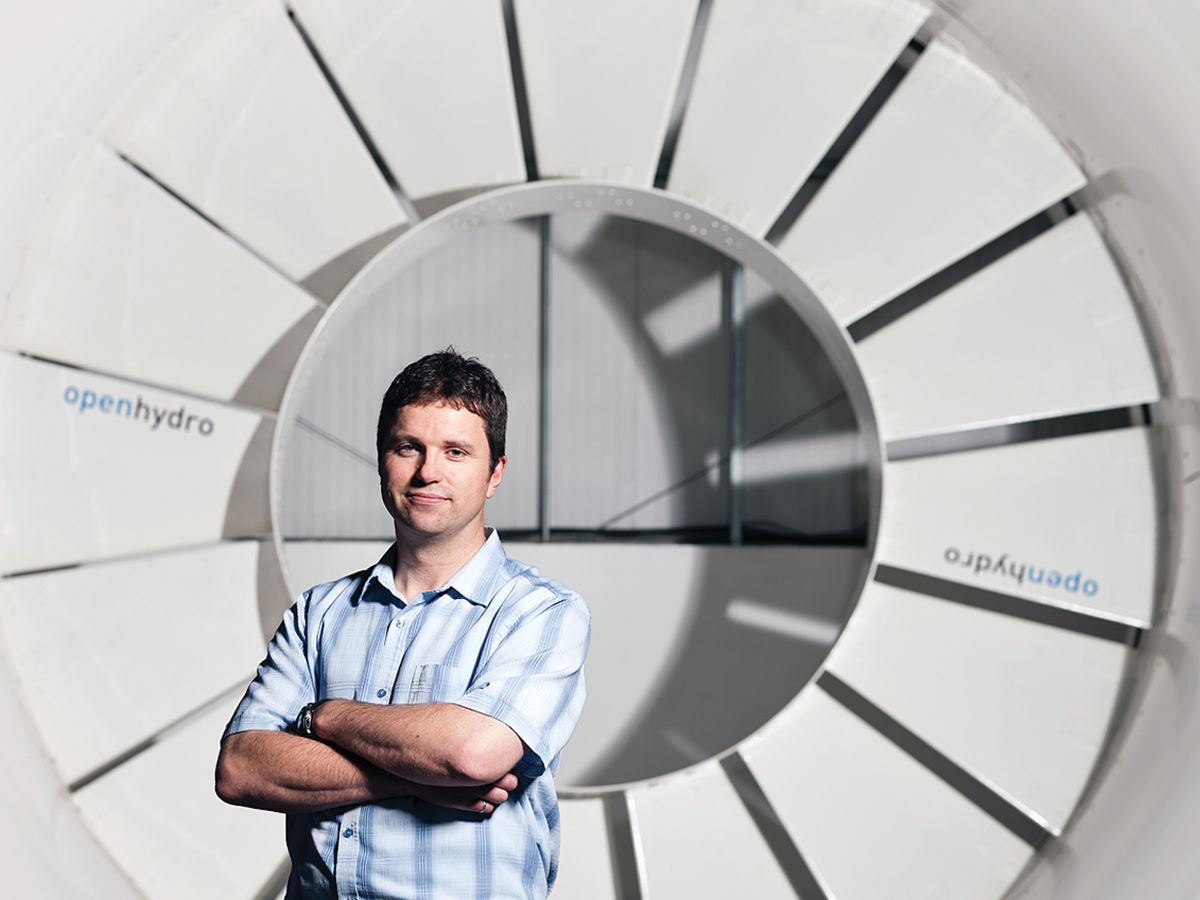
The tides may be predictable, but for an engineer testing and developing some of the world’s first commercial-scale tidal turbines, conditions can be more than a little unpredictable. Just ask Allan Robinson, a senior electrical engineer at OpenHydro Group, a leading tidal power company based in Dublin.
Robinson recalls one afternoon last March, when he was putting a turbine through its paces at an offshore test site near Scotland’s Orkney Islands. He and his colleagues were working on an elevated platform, installing power-metering equipment for the massive turbine that was whirling grandly beneath the waves, when they received word of an incoming gale. They had 20 minutes to evacuate before high seas would have forced them to spend the night on the cold metal platform.
Corrosive seawater and marine organisms are tough on electronics, and Robinson says that’s what makes this line of work so interesting. Because going out to visit a turbine at sea is expensive, the company designs systems that require as little servicing as possible, says Robinson. “We need to have high reliability and high redundancy for all the critical components.”
While a few experimental tidal power stations have been built in past decades, a number of companies are now racing to develop durable turbines that can be deployed in “tidal farms.” OpenHydro, founded in 2005, is at the forefront. For engineers like Robinson, it’s a chance to invent a new industry. “We’re doing things that no one has ever done before,” he says.
Robinson, a Canadian, came into this field after collecting one bachelor’s degree in mechanical engineering and another in electrical engineering, with a focus on power and control systems. After completing his studies, he worked for a marine power company in British Columbia, Canada, for more than five years. In 2010, OpenHydro recruited him and moved him to Ireland to help with the company’s R&D on turbine control systems and grid connections.
OpenHydro’s system is invisible from the surface. Its massive turbines—at 16 meters in diameter, they have open centers to let fish swim through—rest on the seafloor. Power is sent back to shore with submarine cables.
Robinson tests these cutting-edge turbines and their control equipment in saltwater pools at the company’s engineering center in Greenore, Ireland.
The company has begun its first commercial deployment off the coast of Brittany, France, where the first of four 2.2-megawatt turbines was being installed at press time. Other tidal farms are in the works around Britain’s Channel Islands. “We’re still at the early stages of the tidal power industry,” says Robinson, but for an engineer who doesn’t mind a little excitement, unpredictable conditions are just fine.
This article originally appeared in print as “Profile: Allan Robinson.”
